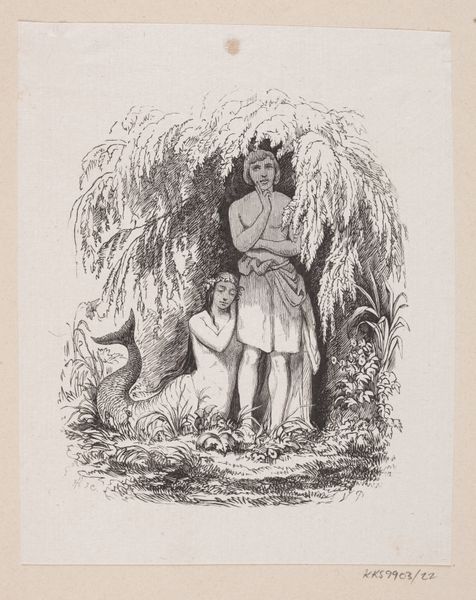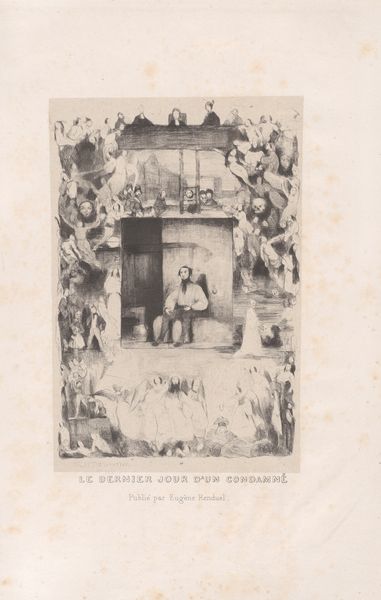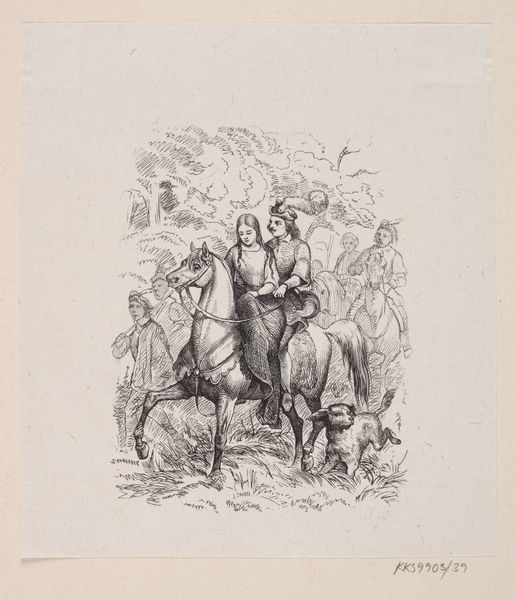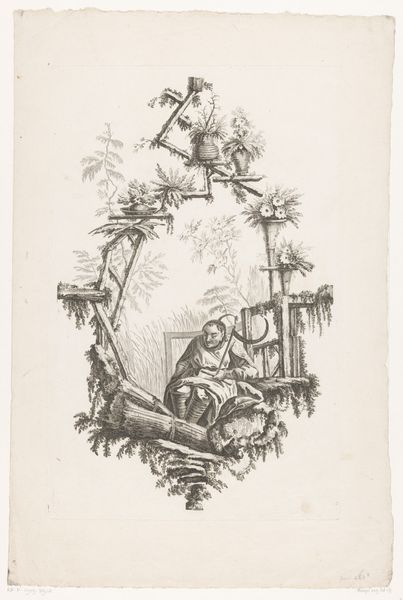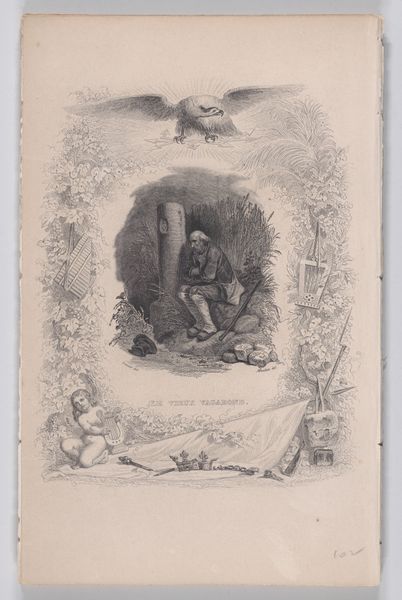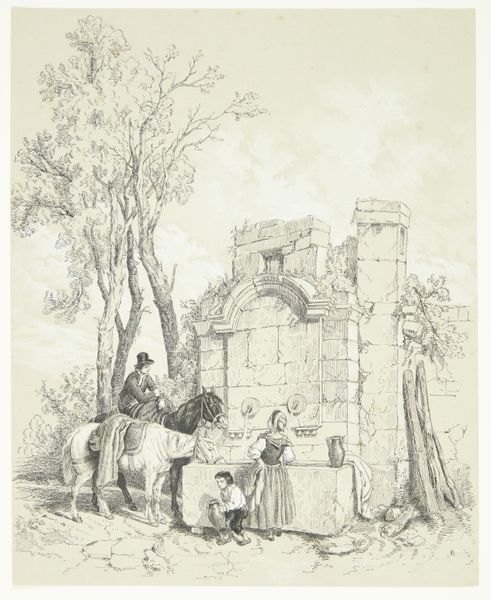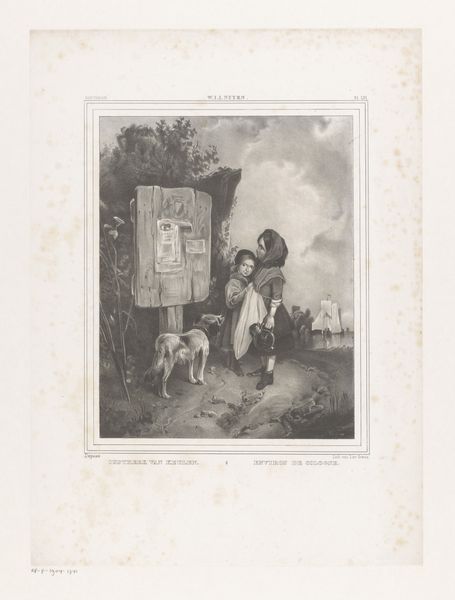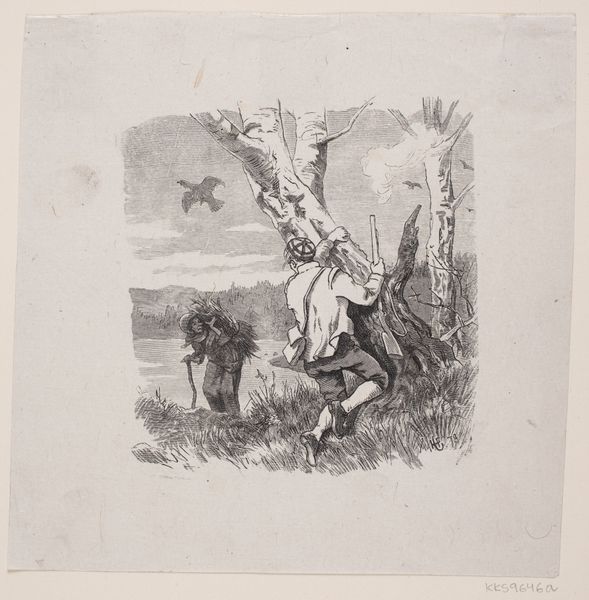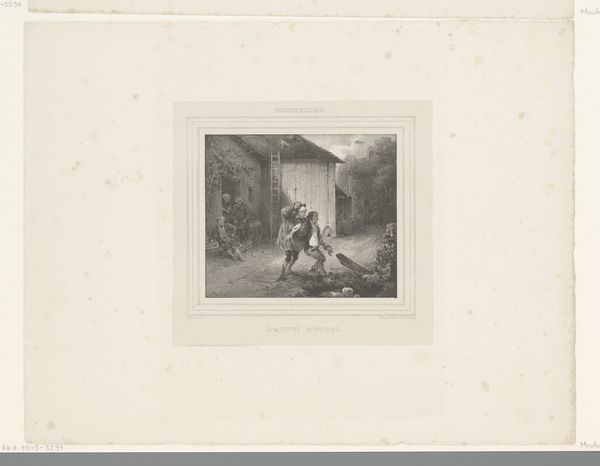
print, woodcut
#
narrative-art
# print
#
figuration
#
romanticism
#
woodcut
#
genre-painting
#
realism
Dimensions: 166 mm (height) x 159 mm (width) (bladmaal)
Curator: What strikes you first about this intriguing scene? Editor: Mischief, plain and simple! There’s something so universally relatable about children up to no good. Tell me more about it. Curator: This woodcut, made in 1846, is titled "Children Stealing Apples" by Axel Theodor Kittendorff. I'm drawn to the way it captures a fleeting moment of childhood transgression. Editor: It feels charged with class tension, doesn't it? There's a formality to the standing figure guarding the fence—note his striped trousers and shovel. And a group of children below, scrabbling, their clothes rumpled and disordered. Curator: Absolutely. That upright figure feels very symbolic. His stern presence lurking behind the fence creates a barrier, marking boundaries. He embodies social constraints and authority. The hat makes me think he is perhaps some sort of village authority figure or school teacher. Editor: And the apple tree itself? That's heavy with symbolic weight—a garden of earthly delights being plundered. The romantic idealization of childhood is clashing with something a little darker. Are they being mischievous or reacting to conditions? Is it just for fun or is hunger involved? Curator: A garden is frequently seen as an earthly paradise of delight and innocent life, juxtaposed with that temptation through the apple. The image seems to sit on a tipping point of understanding if that innocence is lost. It plays with universal ideas around temptation and forbidden knowledge. Editor: Right! There's a political dimension there too, about resource allocation and how society shapes morality through these material constraints. How access dictates our definition of what is permissible or not. Even the artistic medium underscores accessibility – as an affordable and democratic medium, the print allows broader commentary. Curator: Indeed. It resonates with a long history of artistic depictions of morality, especially those linked with daily life. Through images of childhood, culture embeds ethical concepts. Editor: Yes, and while appearing charming, this woodcut whispers questions of social justice and questions romanticized ideals. It speaks volumes on multiple levels! Curator: A tiny echo with enduring symbolic strength. Editor: Exactly, art allows us to reflect on universal realities through various symbolic images like children or the symbolic idea of an apple and gardens!
Comments
No comments
Be the first to comment and join the conversation on the ultimate creative platform.
